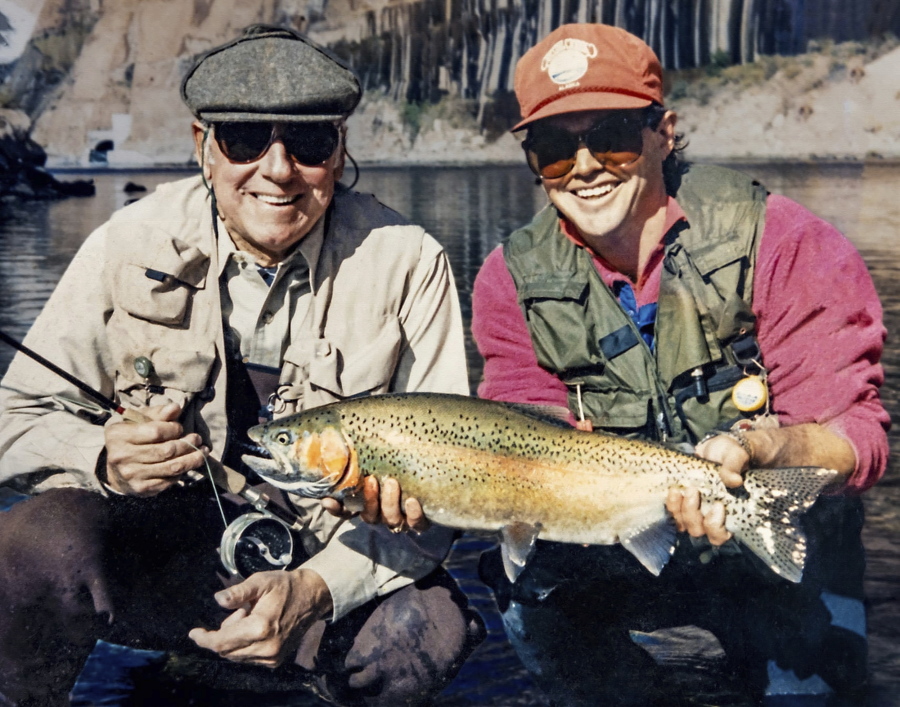DENVER — Terry Gunn came to the red canyons of northern Arizona to guide fishing trips for a year or two. The chance to hike, raft and fly fish drew Wendy Hanvold, a retired ski bum who took a job there waiting tables at an anglers’ lodge. She heard rumors of the intrepid fishing guide who had just returned from an Alaska trip, and one day when he came in, she approached his table to take his order.
“You fly fish, right?” she said. “I’ve always wanted to learn.”
It was a match made in Marble Canyon.
Since then, the couple have opened an anglers shop and a guide service, purchased a lodge, and raised a son. They take pride in showing tourists the best spots to catch and release prized rainbow trout beneath craggy cliffs carved by the Colorado River.
But it could all soon change as warmer water temperatures threaten fish survival and the Gunns’ livelihood.
Key Colorado River reservoirs Lake Powell and Lake Mead are both about one-quarter full. The continued drop, due to overuse and an increasingly arid climate, is threatening the fish and the economies built around them.
“We’re in totally uncharted territory,” said Gunn, who began guiding in Marble Canyon in 1983. That year, Glen Canyon Dam began to release water on an emergency basis after record snowmelt produced a powerful spring runoff, resulting in near failure of the dam. In all these years, the river has usually been cold, with typical summer temperatures in the 50s.
But since late August, the water temperature at Lees Ferry — the site of a world-famous trout fishery — has risen above 70 degrees seven times. That might be idyllic for a summer dip under the blazing Arizona sun, Gunn said, but it approaches peril for the beloved sport fish. A few degrees higher can be lethal.
To make matters worse, when temperatures rise, the amount of oxygen dissolved in the water falls, making it tough for fish to even breathe.
As the reservoir drops, it sends warmer water with less oxygen into the river below the dam. Should that water reach 73 degrees, Gunn said, his family’s guide service could start calling off afternoon trips.
Recently, a small reprieve of cooler temperatures has taken the edge off the fear at Lees Ferry, but uncertainty still taints the air.
“Mother Nature holds a handful of trump cards, and if she decides to play one, there’s not a damn thing you can do about it,” Gunn said.
Seven states, Mexico, and tribal nations depend on the stressed Colorado River. They have undergone voluntary and mandatory cuts and are grappling with how to further reduce their reliance on the river by about 15 percent to 30 percent, per a recent mandate by the Department of the Interior.
Struggling aquatic life further complicates the already delicate river management and increases the cost.
Just a few miles north of Lees Ferry and its trout fishery, there’s another threat: non-native predatory smallmouth bass. They’re supposed to be contained in Lake Powell. But this summer, they were found in the river below the dam. Smallmouth bass already have wreaked havoc on native fish way upriver where the government spends millions of dollars each year to control the predators. They were held at bay in Lake Powell because Glen Canyon Dam has served as a barrier for them for years — until now. The reservoir’s recent sharp decline is enabling these introduced fish to shoot through the dam and edge closer to the Grand Canyon, where the biggest groups of humpback chub — an ancient, threatened, native fish — remain.
The National Park Service applied chemicals Saturday to kill these predatory fish. The infested area is sealed off from the river with a vinyl barrier, desirable fish are moved to the main channel, and the substance is applied to just that area, said National Park Service fisheries biologist Jeff Arnold. A second treatment is likely later this fall.



